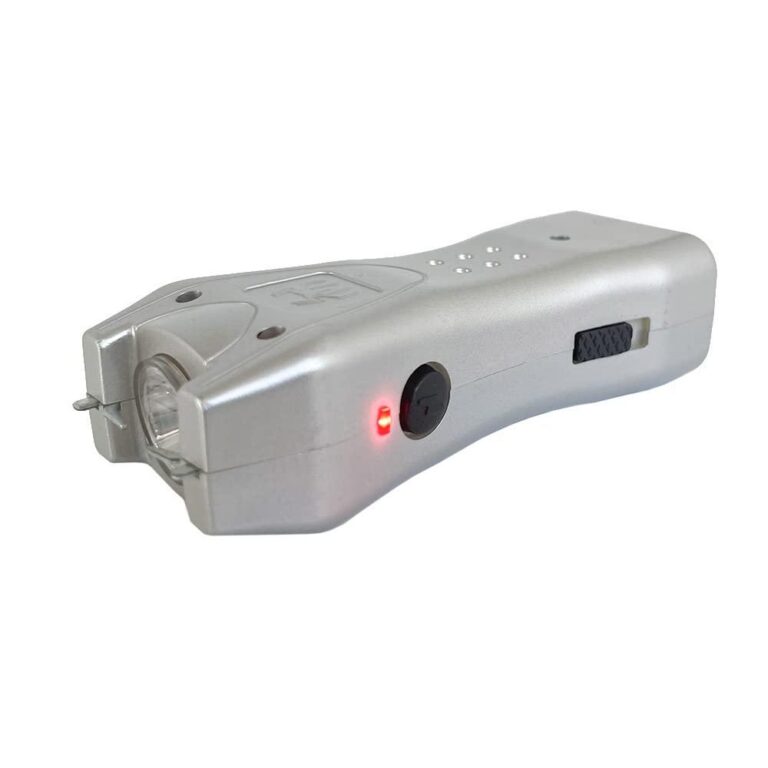Table of Contents
- Understanding Different Stun Gun Battery Technologies and Their Performance
- Signs Your Stun Gun Battery Needs Replacement and How to Test It
- Choosing the Right Replacement Battery for Your Specific Stun Gun Model
- Step-by-Step Guide to Safely Replacing and Maintaining Your Stun Gun Battery
- The Way Forward
Understanding Different Stun Gun Battery Technologies and Their Performance
When it comes to stun gun batteries, performance hinges on the type of technology powering the device. The most common varieties include Nickel-Cadmium (NiCd), Nickel-Metal Hydride (NiMH), and Lithium-Ion (Li-ion) batteries. NiCd batteries, once popular for their robustness, suffer from memory effect which can reduce capacity if not periodically fully discharged. NiMH batteries improved upon this with higher capacity and less memory effect, yet they still require occasional calibration for optimal performance. Li-ion batteries reign supreme today, boasting high energy density, lighter weight, and faster recharge times, making them ideal for portable stun guns that demand reliability and longevity in the field.
Each battery technology also differs in how it handles discharge rates and environmental factors, influencing the stun gun’s effectiveness and lifespan. For instance:
- NiCd: Durable but heavier and prone to voltage drop over time.
- NiMH: Better capacity but higher self-discharge in warm conditions.
- Li-ion: Lightweight, long-lasting, but sensitive to overcharging and temperature extremes.
Signs Your Stun Gun Battery Needs Replacement and How to Test It
When your stun gun begins to show signs of weakness, it’s often a clear indication that the battery inside is nearing the end of its lifecycle. Common symptoms include a noticeable drop in the stun gun’s output intensity, longer charging times, or the device failing to hold a full charge. You might also experience inconsistent power delivery or the stun gun shutting off unexpectedly during use. These signals are critical because a reliable battery ensures the device is ready when you need it most.
To accurately assess whether the battery needs replacement, you can perform simple yet effective tests. First, use a multimeter to check the battery voltage; a significant drop below the manufacturer’s nominal rating suggests replacement. Additionally, charging the stun gun fully and then monitoring how quickly it discharges provides insight into battery health. If you notice rapid power loss or if the device gets unusually warm during charging, it’s time for a fresh battery. Regularly performing these checks will help maintain peak performance and avoid unexpected failures.
- Inconsistent output or weaker shock intensity
- Extended charging times or failure to reach full charge
- Device unexpectedly powers off during use
- Voltage drops confirmed via multimeter readings
- Rapid discharge after full charge
- Excessive heat generation while charging
Choosing the Right Replacement Battery for Your Specific Stun Gun Model
Before purchasing a replacement battery, it’s crucial to identify the exact specifications required by your stun gun model. Manufacturers often use different voltage, capacity, and connector types, so simply buying a battery labeled “universal” can lead to poor performance or even damage. Consult your user manual or the manufacturer’s website to find the precise model number and battery specifications. Pay special attention to details like battery chemistry (Li-ion, NiMH, or NiCd), physical size, and terminal layout, as these factors directly impact the battery’s fit and efficiency.
When selecting your new battery, consider the following key points to ensure compatibility and longevity:
- Voltage Match: Always match the exact voltage rating recommended for your stun gun to maintain operational integrity.
- Capacity & Runtime: Higher mAh ratings mean longer usage between charges, but size constraints might influence your choice.
- Connector Type: Confirm that the connectors match to avoid modification or poor connectivity.
- Brand Authenticity: Opt for OEM or trusted third-party brands to guarantee quality and safety.
Making an informed selection not only safeguards your stun gun’s functionality but also maximizes battery life and performance in critical moments.
Step-by-Step Guide to Safely Replacing and Maintaining Your Stun Gun Battery
Before starting the battery replacement process, ensure your stun gun is completely powered off and disconnected from any charging source. Safety is paramount when handling devices designed for defense. Begin by locating the battery compartment, usually secured with screws. Use the correct screwdriver to carefully remove the cover without damaging the device. Always handle the battery with clean, dry hands and avoid metallic tools that could accidentally short the terminals. Once opened, gently disconnect the old battery, noting the orientation and connections for reference. Dispose of the used battery according to local hazardous waste regulations to protect the environment.
When inserting your new battery, confirm it matches the exact specifications of your stun gun model. Place it carefully in the compartment, ensuring that the terminals align as observed during removal. Replace the compartment cover and tighten screws securely, but avoid over-tightening which might crack the casing. After reassembly, perform a quick function test in a safe environment to verify the stun gun powers on correctly. To extend battery life, recharge only with the manufacturer-approved charger and avoid leaving the stun gun plugged in unnecessarily. Regular maintenance, including cleaning contacts and checking for signs of wear, will keep your device reliable and ready when needed.
The Way Forward
In conclusion, understanding the different stun gun battery types is essential for maintaining optimal performance and ensuring your device is always ready when you need it. Whether you have a rechargeable lithium-ion battery or traditional disposable cells, knowing how to properly replace and care for your batteries can extend the life of your stun gun and provide reliable protection. Always refer to your manufacturer’s guidelines when selecting replacement batteries to match your model’s specifications. By staying informed and proactive about battery maintenance, you can keep your stun gun functioning safely and effectively for years to come.Check Our Other Blogs
- StunGun – Your Trusted Source for Stun Guns, Laws, and Self-Defense Tips
- PepperSprayLaws – Your Trusted Resource for Pepper Spray Information
- StunGunLaws – Your Trusted Guide to Stun Gun Legality and Safety



